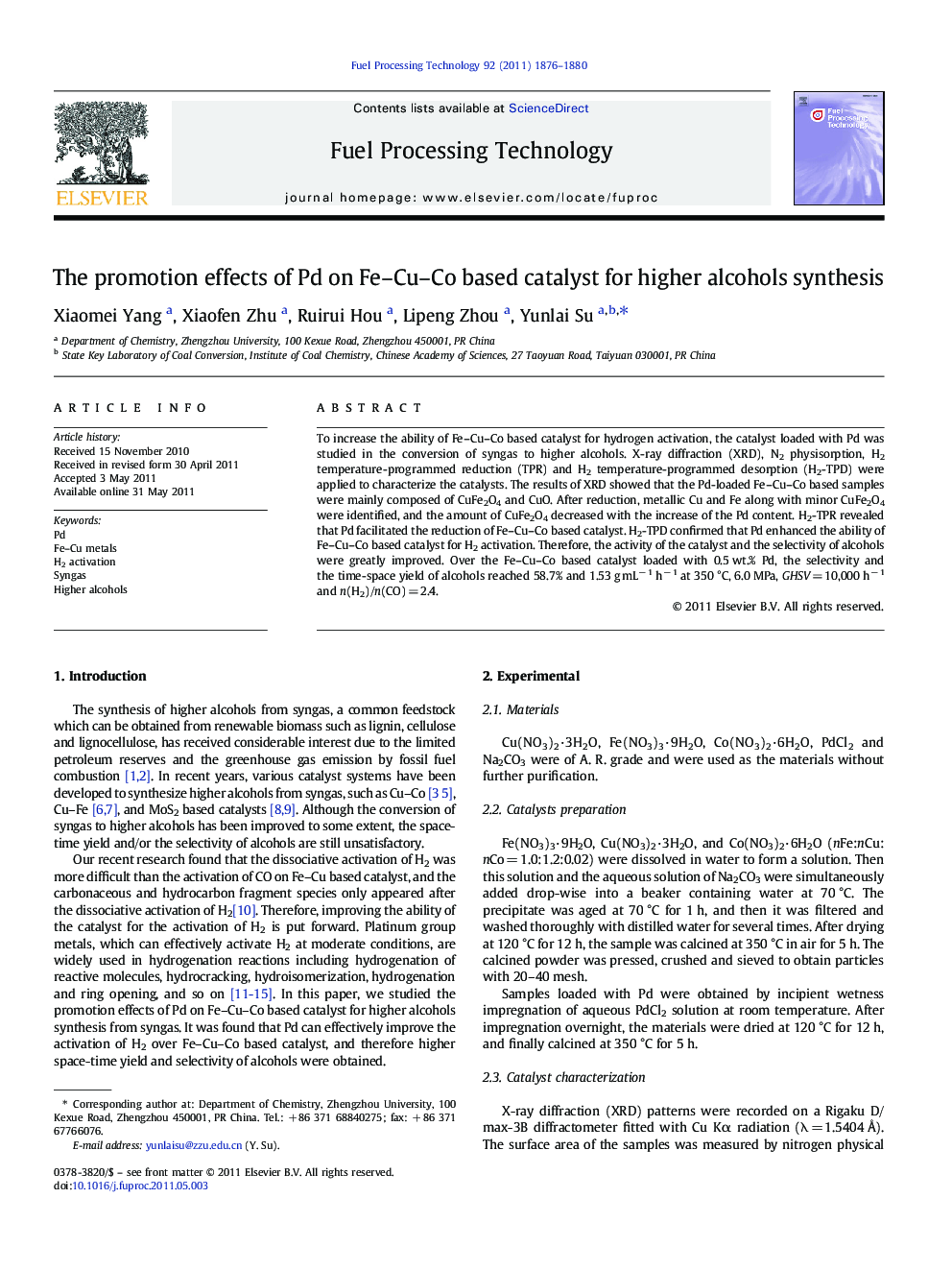| Article ID | Journal | Published Year | Pages | File Type |
|---|---|---|---|---|
| 210567 | Fuel Processing Technology | 2011 | 5 Pages |
To increase the ability of Fe–Cu–Co based catalyst for hydrogen activation, the catalyst loaded with Pd was studied in the conversion of syngas to higher alcohols. X-ray diffraction (XRD), N2 physisorption, H2 temperature-programmed reduction (TPR) and H2 temperature-programmed desorption (H2-TPD) were applied to characterize the catalysts. The results of XRD showed that the Pd-loaded Fe–Cu–Co based samples were mainly composed of CuFe2O4 and CuO. After reduction, metallic Cu and Fe along with minor CuFe2O4 were identified, and the amount of CuFe2O4 decreased with the increase of the Pd content. H2-TPR revealed that Pd facilitated the reduction of Fe–Cu–Co based catalyst. H2-TPD confirmed that Pd enhanced the ability of Fe–Cu–Co based catalyst for H2 activation. Therefore, the activity of the catalyst and the selectivity of alcohols were greatly improved. Over the Fe–Cu–Co based catalyst loaded with 0.5 wt.% Pd, the selectivity and the time-space yield of alcohols reached 58.7% and 1.53 g mL− 1 h− 1 at 350 °C, 6.0 MPa, GHSV = 10,000 h− 1 and n(H2)/n(CO) = 2.4.
Research highlights► Pd facilitated the reduction of Fe–Cu–Co based catalyst. ► Pd enhanced the ability of Fe–Cu–Co based catalyst for H2 activation. ► The activity of the catalyst and the selectivity of alcohols were greatly improved.
